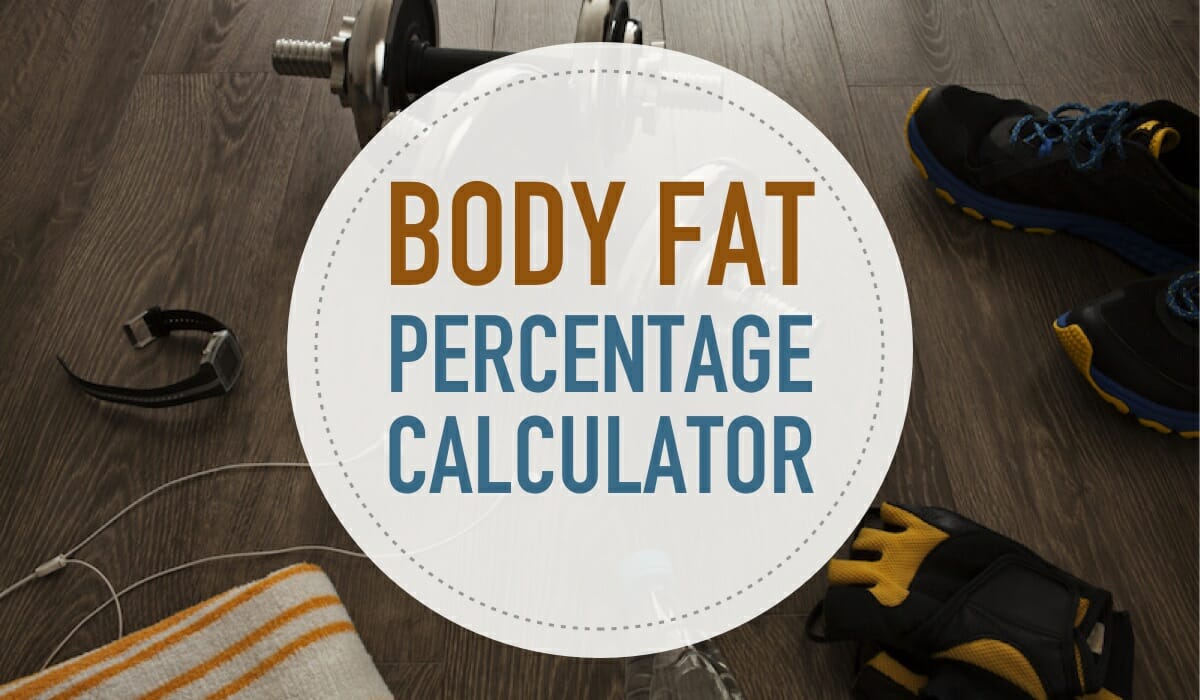Body Fat Percentage Calculator

Use this calculator to estimate your body fat percentage.
How do I calculate body fat percentage?
Body fat percentage is the proportion of your body weight that is comprised of fat tissue.
Example: A 155-pound female who has a body fat percentage of 30% would have 46.5 pounds of fat tissue. The remaining 108.5 pounds of her body weight would be composed of muscle, bone, nervous, skin, and other tissues.
The most accurate way to calculate your body fat at home is by using skinfold calipers.
- Take measurements at 3 different sites
Men: Chest, abdomen, and thigh.
Women: Tricep, abdomen, and suprailic. - Input these, along with your weight.
- The calculator will accurately predict your body fat percentage.
Taking these measurements weekly will help you track changes in body composition.
Why is it better to measure body fat than weight or BMI?
The scale isn’t always accurate due to weight fluctuations (often from water retention).
BMI compares weight against height but gives you no clue about your body composition.
Body fat percentage is a better indicator of fitness and health.
What is a good body fat percentage?
This depends on your age, as body composition changes as we get older.
Research published in the AJCN shows the range of body fat percentages where BMI is in the ideal range (18.5 to 24.9).
If your percentage is in this range – you are doing well.
| Age | Men | Women |
| 20-39 | 8-19% | 21-32% |
| 40-59 | 11-21% | 23-33% |
| 60-79 | 13-24% | 24-35% |
Is 20% good body fat?
If you are female 20% is exceptional. If you are male, 20% typically means you are just on a healthy BMI (around 25).
Is BMI and body fat percentage the same?
No. They are very different.
Your Body Mass Index is a measure of the height to weight ratio and gives no indication of body composition.
It is possible for two individuals to be of the same weight and height but to have different levels of fat and muscle tissue.
This is why body fat measurement offers a superior guide to health and fitness.
Tracking Body Fat Percentage When Counting Macros
Counting macros is a superior method of losing fat (compared to traditional restrictive diets). Tracking body fat percentage is the normal way of measuring progress with a macros-based diet.
- Body fat percentage is important in formulating an accurate TDEE (total daily energy expenditure).
- Most macro dieters are aiming to decrease their fat mass and increase their muscle mass. Tracking BF% change is a great way of tracking progress.
- Knowing your body fat percentage allows you to calculate your fat mass. This helps you establish a realistic and healthy goal weight.

What About Electronic Devices?
Portable electronic body fat devices are popular but can be inconsistent and inaccurate.
In fact, don’t even bother using scales with BF% built-in.
Some gyms have immersion tanks that are more accurate, along with devices such as the Bod Pod. These are all expensive to use. For most people using calipers with the skinfold method is the best value for money.
How low of a body fat can you be?
Men really shouldn’t strive for anything lower than 5% and women 13% if they want their bodies to function optimally.
Having some body fat is healthy and the body needs fat tissue to regulate hormone production and body temperature.
How to calculate lean body mass and fat mass
Multiply your body fat percentage by your total body weight. Then subtract this from your weight – this will be your lean mass.
How to calculate muscle mass
Your bones make up 12-15% of your body weight. 12% for women and 15% for men. (This is an average but it gives you a good estimate.)
Other bodily tissues like nerves, skin, connective, and lymphatic make up about 25%.
Therefore, your muscle mass will make up the remainder of your body weight. This is generally 40-50% but depends on your body fat percentage and what’s left over after subtracting the other weight from your other tissues.
Example: If you are a 190 pound man with 20% body fat:
- 190 x .2 = 38 pounds of fat.
- 190 x .15 = 28.5 pounds of bone.
- 190 x .25 = 48 pounds of other tissues.
- 190 x .4 = 76 pounds of muscle.
References
- Violanti, J. M., Ma, C. C., Fekedulegn, D., Andrew, M. E., Gu, J. K., Hartley, T. A., ... & Burchfiel, C. M. (2017). Associations between body fat percentage and fitness among police officers: A statewide study. Safety and health at work, 8(1), 36-41.
- Gallagher, D., Heymsfield, S. B., Heo, M., Jebb, S. A., Murgatroyd, P. R., & Sakamoto, Y. (2000). Healthy percentage body fat ranges: an approach for developing guidelines based on body mass index. The American journal of clinical nutrition, 72(3), 694-701.
- Jackson, A. S., Pollock, M. L., & Ward, A. (1980). Generalized equations for predicting body density of women. Medicine and Science in Sports and Exercise, 12, 175-182.

 Calorie Deficit Calculator
Calorie Deficit Calculator Body Recomposition Calculator
Body Recomposition Calculator Macro Calculator
Macro Calculator Calories Burned Calculator
Calories Burned Calculator Keto Macro Calculator
Keto Macro Calculator